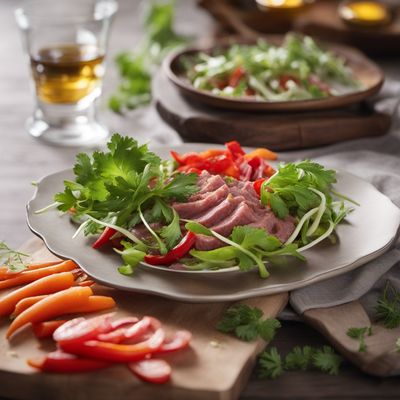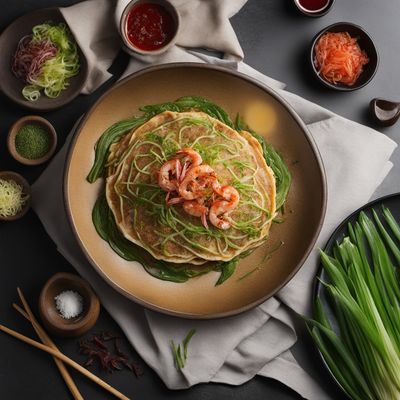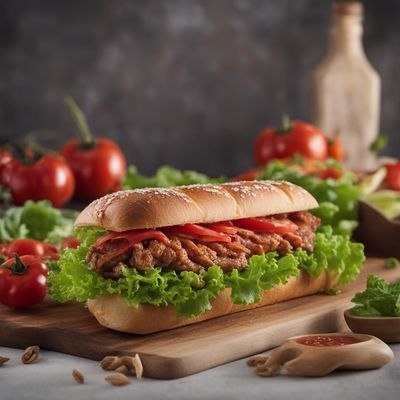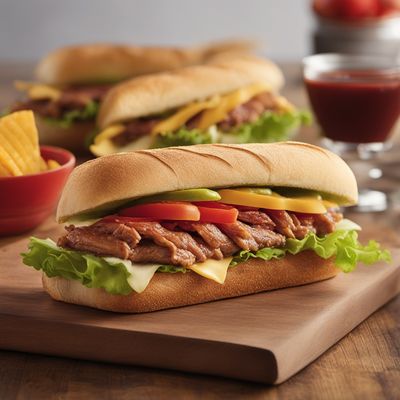
Ingredient
Mayonnaise sauce
Creamy Delight: Unveiling the Magic of Mayonnaise Sauce
Mayonnaise sauce is a thick and creamy emulsion made from egg yolks, oil, vinegar or lemon juice, and seasonings. It has a smooth texture and a pale yellow color. The sauce is known for its rich and tangy flavor, with a hint of acidity and a subtle sweetness. It adds a luscious creaminess to dishes and enhances their overall taste.
Origins and history
Mayonnaise sauce originated in France in the 18th century and quickly gained popularity across Europe. It is believed to have been named after the city of Mahón in Menorca, Spain, where it was introduced by the French during the Seven Years' War. Over time, mayonnaise sauce spread to different parts of the world and became a staple in various cuisines.
Nutritional information
Mayonnaise sauce is a good source of healthy fats, providing essential omega-3 and omega-6 fatty acids. It also contains vitamins E and K. However, it is high in calories and should be consumed in moderation.
Allergens
Mayonnaise sauce may contain allergens such as eggs and soy. It is important to check the label for any potential allergens before consuming.
How to select
When selecting mayonnaise sauce, look for brands that use high-quality ingredients and avoid those with artificial preservatives or additives. Opt for options made with cage-free eggs and organic oils for a healthier choice.
Storage recommendations
Mayonnaise sauce should be stored in a tightly sealed container in the refrigerator. It is important to keep it away from heat and sunlight to maintain its freshness. Once opened, it is best consumed within a month.
How to produce
Mayonnaise sauce can be easily made at home by whisking together egg yolks, oil, vinegar or lemon juice, and seasonings. It requires careful emulsification to achieve the desired creamy texture.
Preparation tips
To prepare mayonnaise sauce, slowly drizzle the oil into the egg yolks while whisking vigorously to create a stable emulsion. Adding a teaspoon of mustard can help with the emulsification process. For a twist, experiment with different seasonings such as garlic, herbs, or spices to customize the flavor.
Substitutions
Greek yogurt or sour cream can be used as substitutes for mayonnaise sauce in certain recipes to reduce the fat content and add a tangy flavor.
Culinary uses
Mayonnaise sauce is commonly used as a spread for sandwiches, a base for salad dressings, and a dip for fries or vegetables. It is also a key ingredient in dishes like coleslaw, potato salad, and deviled eggs.
Availability
Mayonnaise sauce is widely available in grocery stores and supermarkets worldwide.
More ingredients from this category
Recipes using Mayonnaise sauce » Browse all

Louisiana Russian Cake with a Fast Food Twist
Spicy Cajun Chicken Burger Cake

Peranakan-inspired Open-faced Sandwiches
Nyonya Fusion Delight: Peranakan-inspired Open-faced Sandwiches

Bresaola and Porcini Burger
Italian-inspired Gourmet Burger with Bresaola and Porcini

Peacemaker Po' Boy Sandwich
The Ultimate Seafood Delight: Peacemaker Po' Boy Sandwich

California Burrito with a Twist
The Ultimate Fusion: California Burrito with a Mexican-American Twist

Crab Louie with a Zesty Twist
Zesty Crab Delight: A Refreshing Take on the Classic Crab Louie

Huzarensalade
Dutch Delight Salad

Bacon Sandwich
Savory Bacon Delight: A Northeastern American Twist on the Classic Spanish Bocadillo

Savory Japanese Pancake with a Twist
Okonomiyaki: The Ultimate Japanese Pancake Experience

Haute Tamago Sando
Elevated Egg Sandwich: A Haute Twist on Tamago Sando

Bocadillo de Lomo with a Twist
Spanish Delight: A Modern Twist on Bocadillo de Lomo

American-Style Bocadillos
Savory Sandwich Delights: American-Style Bocadillos
